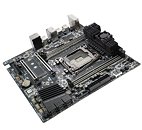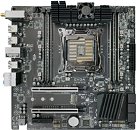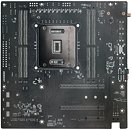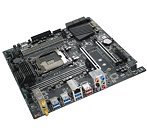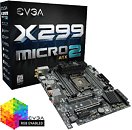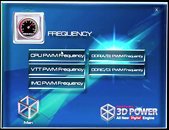Apr 18th, 2025 15:59 EDT
change timezone
Latest GPU Drivers
New Forum Posts
- It's happening again, melting 12v high pwr connectors (1027)
- RX 9000 series GPU Owners Club (393)
- Can Intel recover in DYI market anytime soon? (11)
- Place your bets, what node will rtx 6000/RDNA 5(UDNA 1?) use (8)
- TPU's Nostalgic Hardware Club (20257)
- GPU Pricing and Performance (15)
- What are you playing? (23396)
- Spoofer Modified SMBIOS/BIOS – Need Help Restoring Original Motherboard Info (TUF GAMING B550-PLUS WiFi II) (2)
- Tried installing 576.02 - installer window disappears (20)
- GPU Database (300)
Popular Reviews
- ASUS GeForce RTX 5060 Ti TUF OC 16 GB Review
- NVIDIA GeForce RTX 5060 Ti PCI-Express x8 Scaling
- Palit GeForce RTX 5060 Ti Infinity 3 16 GB Review
- G.SKILL Trident Z5 NEO RGB DDR5-6000 32 GB CL26 Review - AMD EXPO
- ASUS GeForce RTX 5060 Ti Prime OC 16 GB Review
- Teevolution Terra Pro Review
- MSI GeForce RTX 5060 Ti Gaming OC 16 GB Review
- Zotac GeForce RTX 5060 Ti AMP 16 GB Review
- MSI GeForce RTX 5060 Ti Gaming Trio OC 16 GB Review
- ASUS GeForce RTX 5080 TUF OC Review
Controversial News Posts
- NVIDIA GeForce RTX 5060 Ti 16 GB SKU Likely Launching at $499, According to Supply Chain Leak (182)
- NVIDIA Sends MSRP Numbers to Partners: GeForce RTX 5060 Ti 8 GB at $379, RTX 5060 Ti 16 GB at $429 (127)
- Nintendo Confirms That Switch 2 Joy-Cons Will Not Utilize Hall Effect Stick Technology (105)
- Over 200,000 Sold Radeon RX 9070 and RX 9070 XT GPUs? AMD Says No Number was Given (100)
- NVIDIA Launches GeForce RTX 5060 Series, Beginning with RTX 5060 Ti This Week (100)
- Nintendo Switch 2 Launches June 5 at $449.99 with New Hardware and Games (99)
- Sony Increases the PS5 Pricing in EMEA and ANZ by Around 25 Percent (85)
- NVIDIA PhysX and Flow Made Fully Open-Source (77)
News Posts matching #Phase
Return to Keyword Browsing
Tata to Complete Micron's India Chip Facility by End of 2025
IndiaTimes reports that Tata Projects announced on Tuesday that Micron Technology's semiconductor assembly and test facility at Sanand near Ahmedabad (India) will be ready by December 2025. Amit Agrawal, Project Director at Tata Projects, said workers have finished 60 percent of India's first semiconductor plant, the rest will be done by year's end. The plant covers about 50 acres in the Sanand industrial area and the building started in July last year. Tata Projects is putting up this semiconductor Assembly, Testing, Marking and Packaging (ATMP) facility for Micron.
"An ATMP facility is essentially a backend fab facility where testing, packaging and marking of semiconductors are carried out. This is perhaps the largest back-end semiconductor fab unit in the world. So far, 60 percent of work has been completed on Phase-1 with the help of a total workforce of 3,500," Agrawal told reporters. "We will hand over this facility to Micron by December 2025 after finishing civil work, mechanical, electrical and plumbing work along with engineering-related tasks as per the designs given by Micron. The final call to commence the plant will be taken by Micron" added Amit Agrawal, Project Director at Tata Projects.
"An ATMP facility is essentially a backend fab facility where testing, packaging and marking of semiconductors are carried out. This is perhaps the largest back-end semiconductor fab unit in the world. So far, 60 percent of work has been completed on Phase-1 with the help of a total workforce of 3,500," Agrawal told reporters. "We will hand over this facility to Micron by December 2025 after finishing civil work, mechanical, electrical and plumbing work along with engineering-related tasks as per the designs given by Micron. The final call to commence the plant will be taken by Micron" added Amit Agrawal, Project Director at Tata Projects.
SUNON Unveils a Two-Phase Liquid Cooling Solution for Advanced Workstations
In the age of AI, computing power has become a vital component for driving innovation. For most industries, using professional-grade workstations as the computing engine enables efficient computing and infinite creativity. A workstation is a multi-purpose computer that supports high-performance computing in a distributed network setting. It excels at graphics processing and task parallelism, making it suitable for a wide range of AI applications as well as common visual design tasks.
For example, the workstation can fully meet the requirements for multi-task processing, such as 3D modeling, large-scale industrial drawing, advertising rendering output, non-linear video editing, file rendering production and acceleration, and so on. The computer can also perform effectively in a wide range of model loadings and professional software, as well as remote system maintenance and monitoring in unsupervised settings, which has the potential to revolutionize the application domain.
For example, the workstation can fully meet the requirements for multi-task processing, such as 3D modeling, large-scale industrial drawing, advertising rendering output, non-linear video editing, file rendering production and acceleration, and so on. The computer can also perform effectively in a wide range of model loadings and professional software, as well as remote system maintenance and monitoring in unsupervised settings, which has the potential to revolutionize the application domain.
Thermal Grizzly Presents PhaseSheet PTM Thermal Pad
With the PhaseSheet PTM, Thermal Grizzly Holding GmbH presents an electrically non-conductive thermal pad based on a phase change material (PCM). With PhaseSheet PTM, Thermal Grizzly closes the gap between traditional thermal paste and thermal pads based on graphene or carbon thermal pads. This means that the respective advantages in terms of application and thermal conductivity can be combined in one product.
PhaseSheet PTM is a thermal pad that has been optimized for applications where maintenance cycles are subject to long intervals. It is more durable than traditional thermal conductive pastes, but not as durable as KryoSheet, for example, which is virtually maintenance-free. The maximum thermal conductivity of PhaseSheet PTM develops and stabilizes after around ten thermal cycles above 60 degrees Celsius.
PhaseSheet PTM is a thermal pad that has been optimized for applications where maintenance cycles are subject to long intervals. It is more durable than traditional thermal conductive pastes, but not as durable as KryoSheet, for example, which is virtually maintenance-free. The maximum thermal conductivity of PhaseSheet PTM develops and stabilizes after around ten thermal cycles above 60 degrees Celsius.

NVIDIA GeForce RTX 4080 SUPER FE Sports Fewer Power Phases Than Non-SUPER Model
A video review has highlighted some curious internal changes on the NVIDIA GeForce RTX 4080 SUPER Founders Edition graphics card—Geekerwan has discovered that the board design has been "updated" to a small degree, when cross examined with the non-SUPER variant. Team Green engineers have chosen to decrease the number of phases from 13 to 11, while the memory phase count goes from 3 down to 2. HXL (@9550pro) TLDR-ed the situation on social media: "4080 Super FE vs 4080 FE: Core: -2 phase & VRAM: -1 phase." Tech experts have also noticed that the new SUPER FE's board does not have a phase near to its power connector. VideoCardz found these changes to be a little bit odd, considering that the card arrives with faster memory and a increased core count.
Geekerwan reckons that NVIDIA has implemented these internal adjustments in an effort to reduce power consumption in gaming scenarios. The official comparison table confirms this ambition—in the "Average Gaming Power" category we see the GeForce RTX 4080 SUPER target 246 W, and GeForce RTX 4080 (non-SUPER) aim for 251 W. The reviewer notes that their ASUS ROG STRIX RTX 4080 SUPER GAMING sample card features the same power layout as its non-SUPER sibling. They believe that NVIDIA's Founders Edition is the only model bearing an adjusted phase tally—while Team Green's board partners have simply rolled out the previous RTX 4080 layout.
Geekerwan reckons that NVIDIA has implemented these internal adjustments in an effort to reduce power consumption in gaming scenarios. The official comparison table confirms this ambition—in the "Average Gaming Power" category we see the GeForce RTX 4080 SUPER target 246 W, and GeForce RTX 4080 (non-SUPER) aim for 251 W. The reviewer notes that their ASUS ROG STRIX RTX 4080 SUPER GAMING sample card features the same power layout as its non-SUPER sibling. They believe that NVIDIA's Founders Edition is the only model bearing an adjusted phase tally—while Team Green's board partners have simply rolled out the previous RTX 4080 layout.

Strictly Quantum: EK Shows New Velocity2 CPU Blocks, Lignum GPU Block, Real Gold Fittings and More!
EK Water Blocks, or simply EK as the company refers to itself now, had a decent showing at the virtual Computex 2021 event including new AIO CPU coolers, additions to its Fluid Gaming and Fluid Works portfolio, and more water blocks based on current designs and supporting newer hardware, including one we reported on just a few hours ago. These all interested me, but then there was a nearly two hour private conversation followed by a live stream that ended minutes ago which shed more light on future updates and products in its mainstream Quantum DIY liquid cooling lineup.There were renders of the upcoming Velocity² CPU blocks shared before, but seeing them actually manufactured is a whole other thing. Velocity² is the update to EK's popular Velocity CPU blocks, with a complete redesign that evokes more comparisons to monoblocks than other CPU blocks. Taking cues from the flagship EK-Quantum Magnitude, you will see different cooling engines to better cool different CPU sockets. There is also a concealed aesthetic theme here, especially for the acetal top version where you can't see any screws in use, thanks to a patent-pending mounting mechanism from the back- again taking cues from monoblocks. EK says the new system uses "pre-tensioned springs concealed in the water block top, so with just a few turns on the thumb-nuts, the installation is finished". We look forward to checking these out in person when they release in the Sept 2021 timeframe. Read past the break for more from EK!

EVGA Announces Availability of the X299 Micro ATX 2 Motherboard
The X299 MICRO ATX 2 is a reimagined mATX board designed to support the power, performance, and cooling necessary to power Intel's i5/i7/i9 CPU's for the X299 Chipset. With a 14 Phase power design, a thick VRM heatsink/fan, two 8 pin EPS power connectors, an additional 6 pin PCIe power connector, and external BCLK, this motherboard was born for the enthusiast desiring maximum power in a small form factor. The X299 MICRO ATX 2 supports current storage standards, including M.2 NVMe, Intel Optane, Intel VROC and SATA 6Gb/s to give you a blazing fast access to your data, while Intel Dual-Band WIFI/BT and an Intel i219V Gigabit NIC Keeps you connected.

Micron Announces Availability of Phase Change Memory for Mobile Devices
Micron Technology, Inc. (Nasdaq:MU), one of the world's leading providers of advanced semiconductor solutions, today announced an industry first with high-volume availability of its 45-nanometer (nm) Phase Change Memory (PCM) for mobile devices, featuring 1-gigabit (Gb) PCM plus 512-megabit (Mb) LPDDR2 in a multichip package. As the first company in the world currently offering PCM solutions in volume production, Micron is providing chipset vendors, enablers, and handset manufacturers with a proven product that meets the expanding needs of today's wireless market and paves the way for enhanced features and capabilities.
PCM provides enhanced boot time, simplifies software development and boosts performance with overwrite capability. It also provides very low power consumption and extremely high reliability. In addition, the design-optimizing shared interface between LPDDR2 and PCM is fully compliant with JEDEC industry standards.
PCM provides enhanced boot time, simplifies software development and boosts performance with overwrite capability. It also provides very low power consumption and extremely high reliability. In addition, the design-optimizing shared interface between LPDDR2 and PCM is fully compliant with JEDEC industry standards.

SK Hynix and IBM Sign Joint Development for PCRAM
SK Hynix Inc., today announced a joint development agreement and a technology license agreement with IBM for the development of Phase Change Random Access Memory (or 'PCRAM') technology.
IBM brings years of research experience in phase change memory technology, as well as profound know-how in developing multi-level cell (MLC) technology. Last June, IBM researchers demonstrated a reliable multi-bit, phase-change memory technology that would allow computers and servers to boot instantaneously and significantly enhance the overall performance of IT systems. Combining IBM's expertise in such disciplines with SK Hynix's cutting-edge manufacturing process optimization and cost competitiveness will help to accelerate the commercialization of PCRAM technology.
IBM brings years of research experience in phase change memory technology, as well as profound know-how in developing multi-level cell (MLC) technology. Last June, IBM researchers demonstrated a reliable multi-bit, phase-change memory technology that would allow computers and servers to boot instantaneously and significantly enhance the overall performance of IT systems. Combining IBM's expertise in such disciplines with SK Hynix's cutting-edge manufacturing process optimization and cost competitiveness will help to accelerate the commercialization of PCRAM technology.

Gigabyte Shows Off 3D Power Technology for Upcoming Motherboards
Last week we got a glimpse of Gigabyte's new 3D BIOS technology, a UEFI setup program with an innovative and functional user interface built into Gigabyte's upcoming X79 motherboards. Today Gigabyte released a new video detailing another such innovation, called 3D Power. This program gives you total and unrestricted control over the three main dimensions of your motherboard's power delivery: voltages, PWM frequency, and phase control. Gigabyte announced that all its upcoming X79 motherboards will feature PWM (pulse width modulation) CPU power design, backed by highly capable PWM controllers that give you a plethora of things you can tweak.
To begin with, the 3D Power application starts up with a cube that has the icons of the three main elements. Clicking on "voltage" gives you control over voltage-related settings in three main pages, turbo voltage response, load line calibration (active V-droop control), and active over-voltage protection. Load line calibration allows you to fine-tune the extant of V-droop correction over a variety of power domains, such as CPU, VTT, IMC, and DRAM.
To begin with, the 3D Power application starts up with a cube that has the icons of the three main elements. Clicking on "voltage" gives you control over voltage-related settings in three main pages, turbo voltage response, load line calibration (active V-droop control), and active over-voltage protection. Load line calibration allows you to fine-tune the extant of V-droop correction over a variety of power domains, such as CPU, VTT, IMC, and DRAM.

Thermaltake Provides Phase Change Cooling for AMD Graphics Cards
Thermaltake today announced an initiative with AMD to redesign the revolutionary Xpressar micro refrigeration cooling system for use with ATI Radeon HD 4000 series graphics cards. First introduced in a specialized case designed to achieve CPU temperatures much lower than standard liquid cooling systems, the Xpressar technology will be modified for use as a graphics cooling solution. When commercially available, the Xpressar graphics solution could reduce graphics processor temperatures by as much as 20°C when compared to common liquid cooling products.
The Thermaltake Xpressar micro refrigeration cooling system utilizes a miniature version of the compressor cooling module commonly used in refrigerators and air conditioners. To streamline installation, the graphics cooling module will utilize a compact design, occupying only the drive bay area in the computer.
The Thermaltake Xpressar micro refrigeration cooling system utilizes a miniature version of the compressor cooling module commonly used in refrigerators and air conditioners. To streamline installation, the graphics cooling module will utilize a compact design, occupying only the drive bay area in the computer.
Asetek signs research agreement with Professor Massoud Kaviany
Broenderslev, Denmark, June 21 2007 - Asetek, the market leader of thermal management solutions for semiconductors, announced today that they have signed a research agreement with Professor, Ph.D. Massoud Kaviany from University of Michigan.
CPU and GPU capabilities improve by continuously growing the number of transistors in the core, by increasing the clock frequency, and by implementing more CPU cores into multicore processors. This results in higher power consumption which makes thermal management much more challenging. However, there is another factor which is becoming more critical than power consumption; hotspots. Hotspots can generate a very high heatflux and therefore impose tremendous demands on the effectiveness of the CPU and GPU cooler.
To meet this challenge Asetek will work in cooperation with Professor Massoud Kaviany to develop advanced single and two phase cooling solutions. These solutions will have the ability to handle the highly localized and extreme heatfluxes in the future CPU and GPU systems.
"It is an exciting time at Asetek, and we are really pleased to have partnered with Professor Massoud Kaviany on the development of these new cooling solutions," says Christian Christiansen, VP of Engineering at Asetek. Christian Terp, Thermodynamics Specialist at Asetek, goes on to say, "Professor Kaviany's knowledge and expertise in two phase cooling and porous media technologies is extremely impressive and we are looking forward to the product innovation that will come from his contributions."
CPU and GPU capabilities improve by continuously growing the number of transistors in the core, by increasing the clock frequency, and by implementing more CPU cores into multicore processors. This results in higher power consumption which makes thermal management much more challenging. However, there is another factor which is becoming more critical than power consumption; hotspots. Hotspots can generate a very high heatflux and therefore impose tremendous demands on the effectiveness of the CPU and GPU cooler.
To meet this challenge Asetek will work in cooperation with Professor Massoud Kaviany to develop advanced single and two phase cooling solutions. These solutions will have the ability to handle the highly localized and extreme heatfluxes in the future CPU and GPU systems.
"It is an exciting time at Asetek, and we are really pleased to have partnered with Professor Massoud Kaviany on the development of these new cooling solutions," says Christian Christiansen, VP of Engineering at Asetek. Christian Terp, Thermodynamics Specialist at Asetek, goes on to say, "Professor Kaviany's knowledge and expertise in two phase cooling and porous media technologies is extremely impressive and we are looking forward to the product innovation that will come from his contributions."
Apr 18th, 2025 15:59 EDT
change timezone
Latest GPU Drivers
New Forum Posts
- It's happening again, melting 12v high pwr connectors (1027)
- RX 9000 series GPU Owners Club (393)
- Can Intel recover in DYI market anytime soon? (11)
- Place your bets, what node will rtx 6000/RDNA 5(UDNA 1?) use (8)
- TPU's Nostalgic Hardware Club (20257)
- GPU Pricing and Performance (15)
- What are you playing? (23396)
- Spoofer Modified SMBIOS/BIOS – Need Help Restoring Original Motherboard Info (TUF GAMING B550-PLUS WiFi II) (2)
- Tried installing 576.02 - installer window disappears (20)
- GPU Database (300)
Popular Reviews
- ASUS GeForce RTX 5060 Ti TUF OC 16 GB Review
- NVIDIA GeForce RTX 5060 Ti PCI-Express x8 Scaling
- Palit GeForce RTX 5060 Ti Infinity 3 16 GB Review
- G.SKILL Trident Z5 NEO RGB DDR5-6000 32 GB CL26 Review - AMD EXPO
- ASUS GeForce RTX 5060 Ti Prime OC 16 GB Review
- Teevolution Terra Pro Review
- MSI GeForce RTX 5060 Ti Gaming OC 16 GB Review
- Zotac GeForce RTX 5060 Ti AMP 16 GB Review
- MSI GeForce RTX 5060 Ti Gaming Trio OC 16 GB Review
- ASUS GeForce RTX 5080 TUF OC Review
Controversial News Posts
- NVIDIA GeForce RTX 5060 Ti 16 GB SKU Likely Launching at $499, According to Supply Chain Leak (182)
- NVIDIA Sends MSRP Numbers to Partners: GeForce RTX 5060 Ti 8 GB at $379, RTX 5060 Ti 16 GB at $429 (127)
- Nintendo Confirms That Switch 2 Joy-Cons Will Not Utilize Hall Effect Stick Technology (105)
- Over 200,000 Sold Radeon RX 9070 and RX 9070 XT GPUs? AMD Says No Number was Given (100)
- NVIDIA Launches GeForce RTX 5060 Series, Beginning with RTX 5060 Ti This Week (100)
- Nintendo Switch 2 Launches June 5 at $449.99 with New Hardware and Games (99)
- Sony Increases the PS5 Pricing in EMEA and ANZ by Around 25 Percent (85)
- NVIDIA PhysX and Flow Made Fully Open-Source (77)














